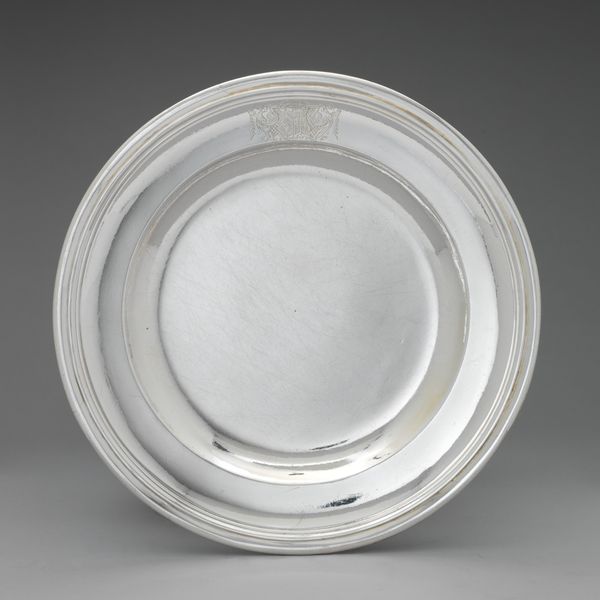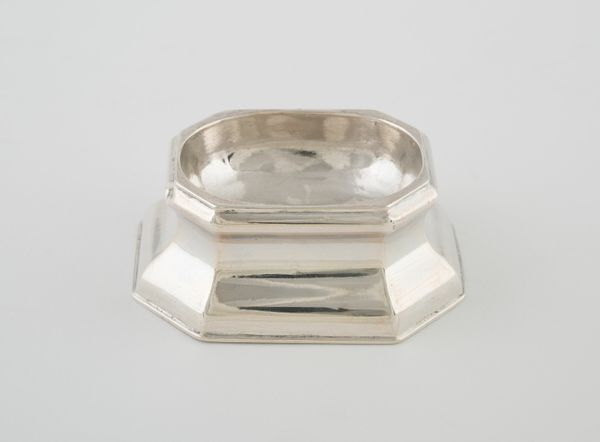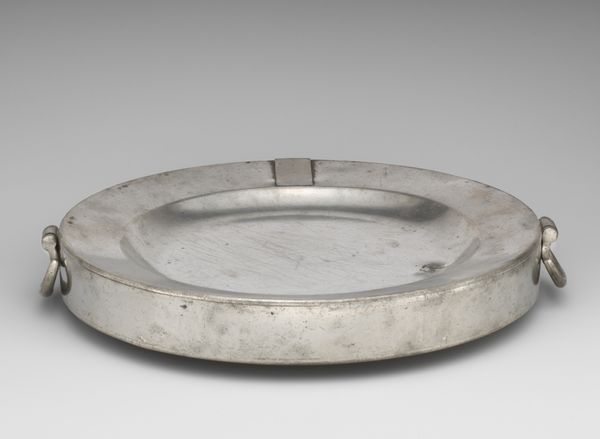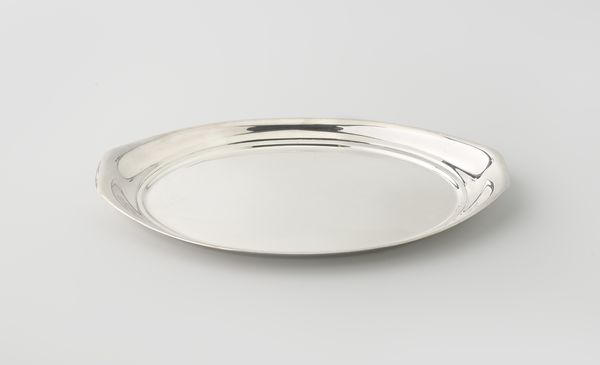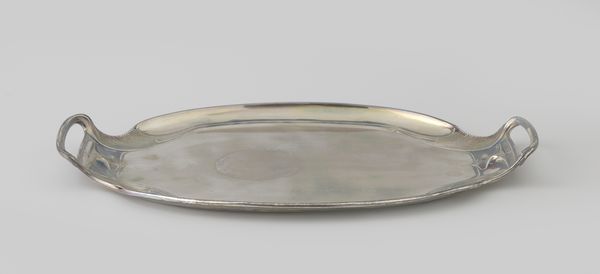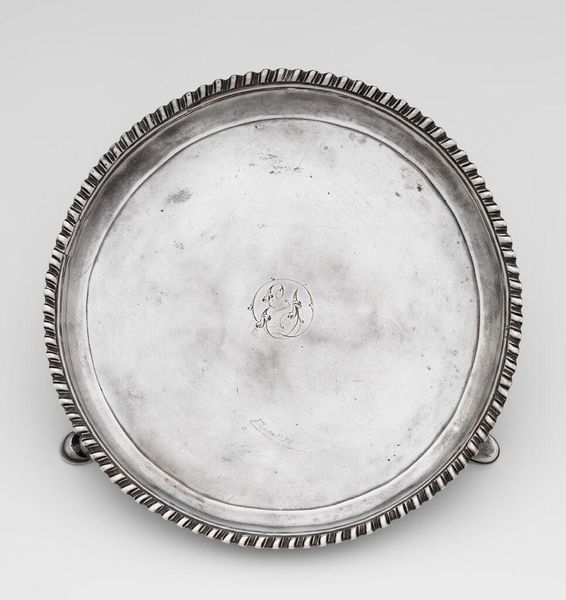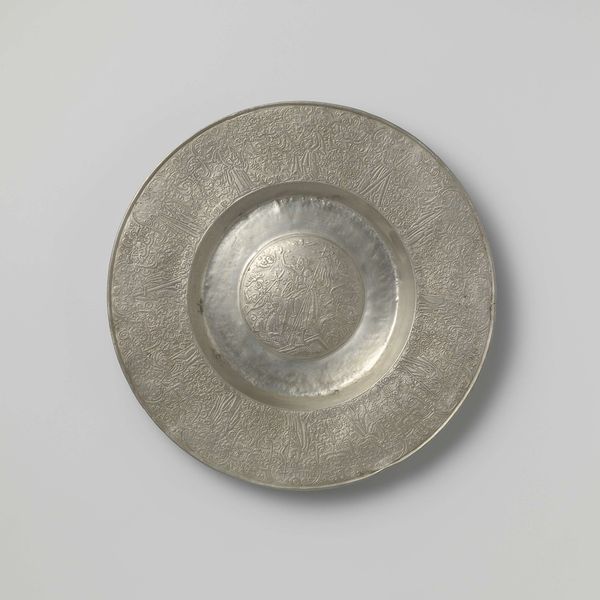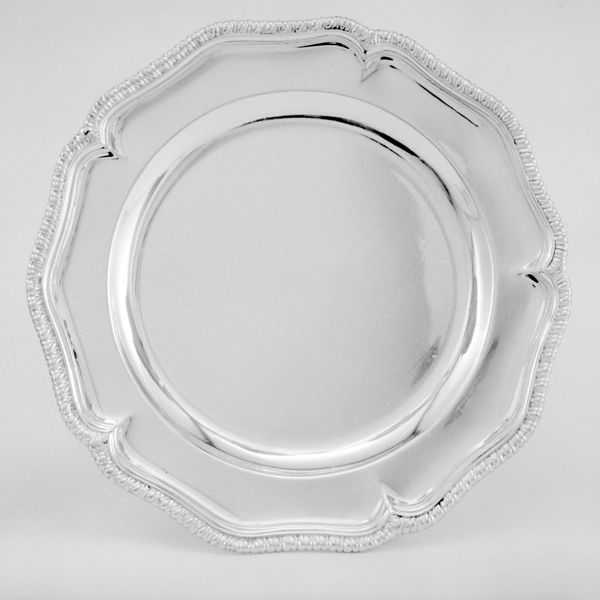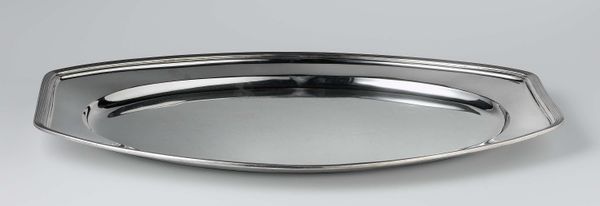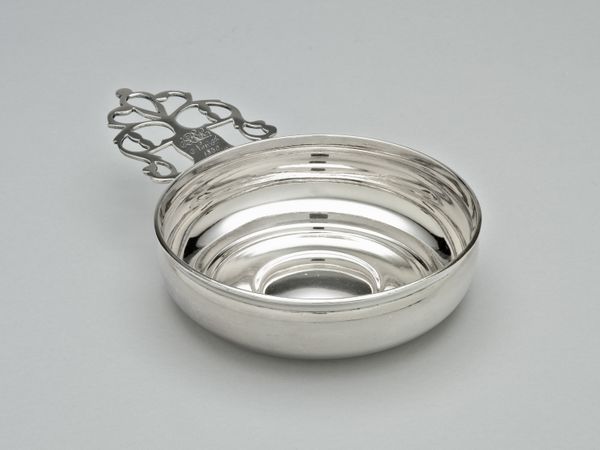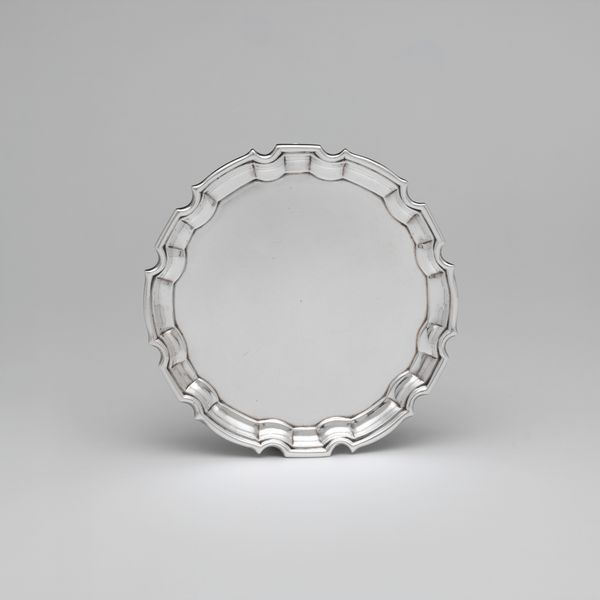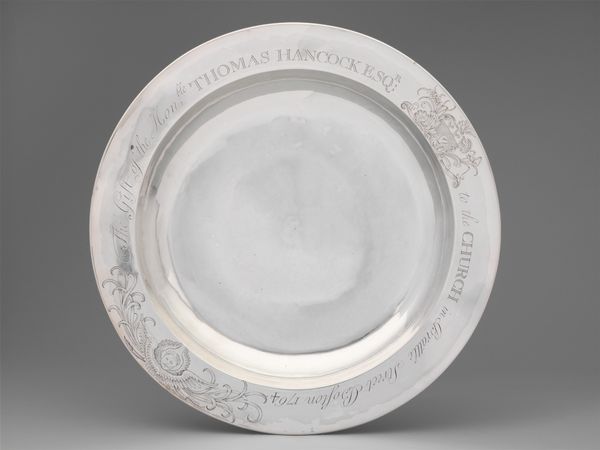
silver, metal
#
medieval
#
silver
#
metal
#
vessel
#
decorative-art
Dimensions: 3.2 × 32.4 × 32.4 cm (1 1/4 × 12 3/4 × 12 3/4 in.); 780.6 g
Copyright: Public Domain
Curator: Right, let’s discuss this Communion Dish, made in 1781 by Benjamin Burt. It’s crafted from silver and currently resides at The Art Institute of Chicago. Editor: It looks so simple, almost austere. The shiny silver is striking, but there’s also an emptiness to the dish itself. What's the significance behind such an object? Curator: Consider the socio-political climate of 1781. The inscription suggests this was commissioned by or in memory of Isaac Royall, a name deeply implicated in the transatlantic slave trade. How does this knowledge complicate your perception of its "simplicity?" Does it now resonate with the exploitation that facilitated such luxury? Editor: That completely shifts things! The gleam of the silver suddenly feels less innocent. So, a church is accepting a gift connected to slavery? Curator: Precisely. Churches at this time benefited directly or indirectly from slavery and other forms of colonial subjugation. Objects like this raise critical questions: How do we reconcile the beauty or craftsmanship of an object with the unethical practices that funded its creation? Was it a donation? Reparations? Purely commemorative? The engraving shows decorative language—eagle—so more research is required to be certain, but understanding art is understanding context and cultural attitudes. Editor: I hadn’t thought about the inscription being a clue of sorts, but looking closer helps uncover hidden layers. Now I see a symbol of uncomfortable compromises, perhaps. Curator: Absolutely. We are also left wondering whether they were simply ignorant to this man’s impact, or if they decided to accept the patronage as their way forward? What an important point to discuss, in thinking about moral decisions within the history of the decorative arts! Editor: This makes me rethink the role of decorative art in reflecting the ethical dilemmas of its time.
Comments
No comments
Be the first to comment and join the conversation on the ultimate creative platform.
